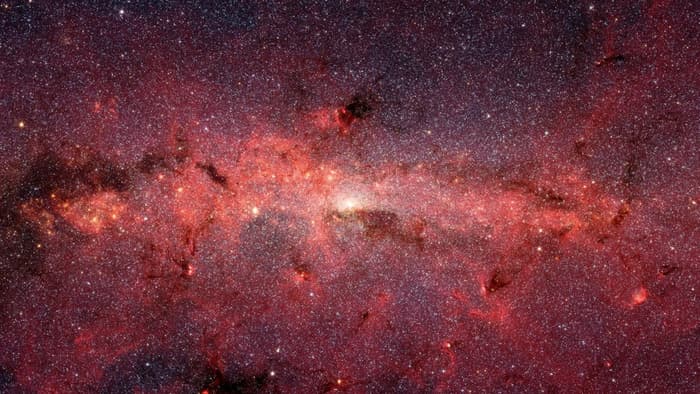Computer simulations carried out by researchers from the Georgia Institute of Technology may have discovered why older stars are suspiciously absent from the central region of our galaxy. Present day observations of the galactic center show it to be populated almost entirely by bright, young stars that are estimated to be only a few million years old, highlighting a startling lack of stellar diversity near the core of the Milky Way.
A theory on the disappearance of the geriatric stars introduced in 2014 suggested that the red giants may have been stripped of 10s of percent of their mass and luminosity as they passed through the plane of a massive, incredibly dense accretion disk.
The young stars currently inhabiting the region surrounding the galactic center would have been born of the disk, which was thought to stretch around 0.5 parsecs (1.6 light-years) from the supermassive black hole at the heart of our galaxy known as Sagittarius A* (Sgr A*). The disk is thought to have been so dense that it fractured under its own gravity, forming clumps that would act as the kick needed to create the next generation of stars.
The new study is the first to use detailed computer simulations to test the accretion disk theory. The team created detailed computer analogues of billion year old red dwarf stars, and ran a series of tests akin to putting the geriatric bodies through a cosmic wind tunnel as they simulated the effects of repeated interactions with the disk – see the video below.
The velocity of the stars and density of the disk were varied to allow the team to determine the conditions needed to diminish the red giants. It was discovered that in order to account for the mass loss proposed in the theory, that 4 – 8 million years ago the red giants would have needed to pass through the disk dozens of times, with each pass taking anywhere between a few days to a number of weeks.
As they passed through the disk, the stars would have created a bow wave, and left in their wake a gaseous tail of discarded matter. The end result of the interaction would be a population of under-luminous red giant stars, which, having lost 20 – 30 percent of their kinetic energy thanks to the drag of carving through the dense accretion disk, inhabit a relatively close orbit with Sgr A*.
It is estimated that the disk must have boasted an overall mass between 100 – 1,000 times the mass of the young stars currently inhabiting the galactic centre. It is possible that a small population of the red giants are still just above the detection threshold of present day telescopes, providing the scope for direct observation, and corroboration of the theory.
Source: Georgia Institute of Technology
